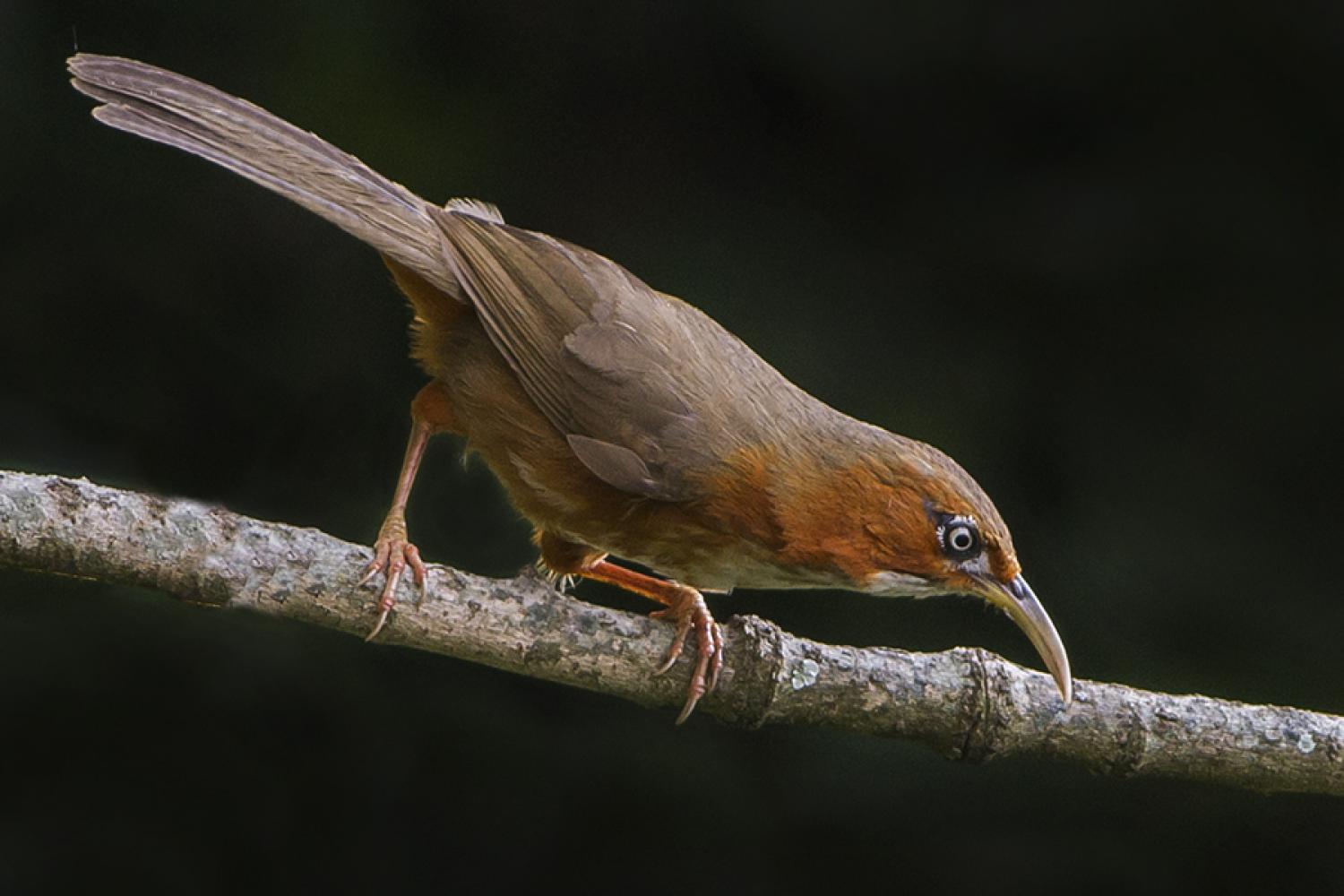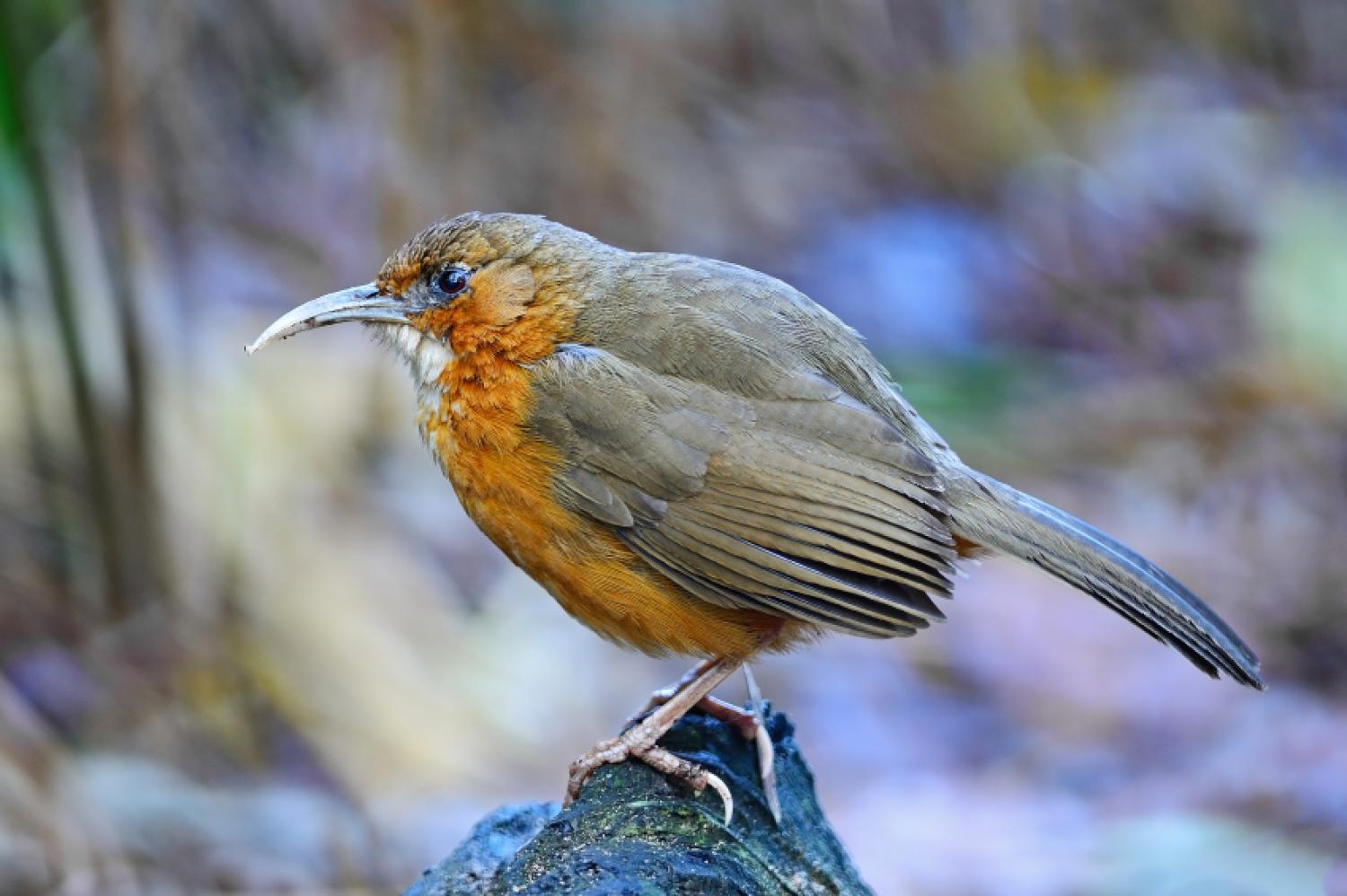Species of Thailand
Rusty-cheeked scimitar babbler
Erythrogenys erythrogenys
Nicholas Aylward Vigors, 1832
In Thai: นกระวังไพรแก้มสีน้ำตาล
The rusty-cheeked scimitar babbler (Erythrogenys erythrogenys) is a species of bird in the family Timaliidae native to South-East Asia.
Subspecies
Erythrogenys erythrogenys has a number of recognized subspecies:
- E. e. erythrogenys (northwest Himalayas)
- E. e. imberbis
- E. e. haringtoni
- E. e. gravivox
- E. e. macclellandi
- E. e. ferrugilatus (central Himalayas from Nepal to Bhutan)
- E. e. imberbis (east Myanmar)
- E. e. celata (east Myanmar and northeast Thailand)
Description
The species is olive-brown above with rusty coluring on the sides of the face, head, thighs, and flanks. The belly is mostly white. Sexes are alike. The beak is long and decurved in a scimitar shape.
Distribution and habitat
The rusty-cheeked scimitar babbler is found from the Himalayas to Myanmar. It inhabits habitats are subtropical or tropical moist lowland forest and subtropical or tropical moist montane forest at elevations up to 2600 m.
Ecology
The bird feeds mostly on the forest floor and in low canopy, forming small groups. Food items include insects, grubs and seeds. Calls consist of a mellow, fluty whistle, a two-noted "CUE..PE...CUE..pe" call followed by single note replay by mate, guttural alarm calls and a liquid contact note. The species is generally quite noisy.
This article uses material from Wikipedia released under the Creative Commons Attribution-Share-Alike Licence 3.0. Eventual photos shown in this page may or may not be from Wikipedia, please see the license details for photos in photo by-lines.
Category / Seasonal Status
BCST Category: Recorded in an apparently wild state within the last 50 years
BCST Seasonal status: Resident or presumed resident
Scientific classification
- Kingdom
- Animalia
- Phylum
- Chordata
- Class
- Aves
- Order
- Passeriformes
- Family
- Timaliidae
- Genus
- Erythrogenys
- Species
- Erythrogenys erythrogenys
Common names
- Thai: นกระวังไพรแก้มสีน้ำตาล
Conservation status

Least Concern (IUCN3.1)
Photos
Please help us review the bird photos if wrong ones are used. We can be reached via our contact us page.
Range Map

- Chiang Dao Wildlife Sanctuary
- Doi Inthanon National Park
- Doi Lang
- Doi Pha Hom Pok National Park
- Huai Nam Dang National Park
- Pha Daeng National Park
- Phu Chi Fa Forest Park
- Phu Hin Rong Kla National Park

